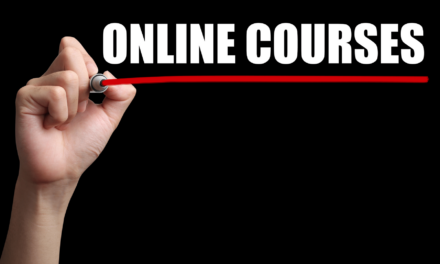
SEPTEMBER 16, 2022
In Friday 5s: First, a thanks to you. We’re glad you invite us into your inbox each Tuesday and Friday. We welcome you to join the community conversation. Now, onto this issue. Some items for your to-do list if you want to write a book (and if not, why you should reconsider.) Plus, money talk from your fellow content creators.
5 things to do
Yes, a lot of people write books. (Some estimates say 4M a year.)
Here are five things to do that will help you learn more about adding a book to your content product offerings.
1. Realize the benefits: Don’t expect a book to bring in big revenue. The average book in the United States sells an average of 1K copies.
However, a book brings a lot more profitable benefits than a potential passive revenue stream. It can help you build credibility and establish your expertise.
Books also help you to earn more revenue from speaking engagements. You could write into the contract the opportunity to sell your book at the event or for the host to purchase copies for all in attendance.
Chelsea Bennett, brand engagement manager at self-publishing company Lulu, says books also can help you attract media attention, landing interviews on podcasts, YouTube, and more.
She also notes that a book can be a low-price point for your community to support and engage with you.
Book Publishing for the Content Entrepreneur (free class)
2. Think about what goes inside the book: You don’t need to start from scratch. If you’re a blogger, you could package your top-performing content or at least use that as a starting point for your creation. If you’re a podcaster, how could you package content from episodes into your book?
If you want to create wholly new content, revisit your content tilt. Think about the common questions or feedback you receive. How could you turn that into an original book?
10 Ridiculously Simple Steps for Writing a Book
3. Start your marketing and sales plan: Chelsea says many authors get so excited about making a book that they mistakenly wait until they have it in their hands before they powder how to sell and promote it.
Knowing the goal of the book and the content of the book now can inform your marketing plan. Detail the target audience of buyers, identify why they might like the book, list the channels you have to access them, and start drafting a promotional calendar.
Writing your marketing plan early also can help guide decisions on the book’s development, from design to content.
19 Ways To Promote a Book by a 4X New York Times Bestseller
4. Create a cover concept: Though you’re not ready for a final cover design, sketching concepts is helpful. After all, just like a headline determines if someone will read an article, a book cover is a big contributor to the reading decision.
What would the title be? It should grab attention or pique curiosity. What will a subtitle be necessary to explain what the book is about? What would that be?
Think about the visual feel – are you thinking about strong imagery, cartoon-esque illustration, or something else? The imagery helps set the stage for what readers can expect.
How To Design a Book Cover in 6 Steps
5. Explore publishing choices: You have two broad choices on how to get your book published – traditional publishing or self-publishing models.
Going the traditional publishing route, you usually need to interest a literary agent first. Then, they pitch the publishers. Ultimately, you sign a contract with the publisher and are assigned an editor to facilitate your book. (That’s the simple process – it’s not that simple to execute.)
In the self-publishing route, you handle the process – identifying the self-publishing service, handling the editing, design, marketing, etc. If you choose this route, look carefully at what each self-publisher offers and what they don’t. For example, if they handle the ordering and distribution side of things, do you get access to the customer data?
17 Pros and Cons of Traditional Publishing vs. Self-Publishing
Sponsored Content
This week’s Tilt shout-out is for the Time Billionaires newsletter!
Every Tuesday, Aadit sends a T.I.N.Y email. It’s a short email with upcoming business Trends, Interesting content, and not-to-be-missed tactics.
12,000+ solopreneurs, creators, and founders read it every week. Read it for free here:
timebillionaires.substack.com
5 things at the tilt 
- When times get desperate, it’s time for desperation revenue. [Content Inc. podcast]
- Content Marketing World Recap with Joe and Robert. [This Old Marketing podcast]
- Nominate your favorite content creator to speak at Creator Economy Expo in May of 2023. (There may be prizes involved!)
- Struggling with technology decisions? Check out what The Tilt uses in their Tech Stack.
- ICYMI: Podcaster Reveals His Insider Tips to a Successful Podcast With Guests
5 things to know
Money
-
Tier up: Consider adding affordable subscriptions for people who consume your content but want more content or exclusive access to it. Bonus? It builds audience loyalty, too. (Forbes)
Tilt Take: The article tackles non-ad revenue options, something that all content creators should consider.
Audiences
-
Web3 adventure: Starbucks heads into an Odyssey, a new experience in its rewards program, where people can earn and buy digital collectible assets that unlock access to new benefits and immersive coffee experiences. (Starbucks)
Tilt Take: OK, we know Starbucks isn’t a typical content creator, but its new program is one to be watched. Creating a “currency”-type network and rewarding holders using blockchain tech is the future for many. -
Know who: Who are your potential customers? You need to nail down that question before starting any business. (Forbes)
Tilt Take: Content creators should tweak that question: Who is your target audience? You can monetize your audience without ever selling them a product.
Tech and Tools
-
Shuffle on: Pinterest launched the Shuffles app in August. The invite-only collaging app has gained popularity among Gen Z. (Passionfruit)
Tilt Take: What’s interesting is the app’s TikTok play: Creating a for-you page of users’ collages that becomes refined as the user interacts with the app.
And Finally
-
Don’t fake it: Given social proof’s value, it may seem like a good strategy to write your own reviews or do a post-for-pay program. But be careful. That deceptive conduct violates the FTC Act. (FTC)
Tilt Take: Sure, you may not get caught by the FTC, but you owe it to your audience to be authentic, transparent, and trustworthy.
5 things to read, watch, or hear
- Do you know your newsletter model should marry your business model? (h/t For The Interested)
- Parenting can boost your negotiation skills. Justin Moore shares what he’s learned from his kids.
- The Growth Currency creator reveals how he’s earned $1K a month in newsletter ads.
- Watch the Marketing In Minutes creator share how he earns a good income as a content entrepreneur.
- A new venture capital firm wants to double down on creators like blogger Kevin Espiritu. It’s planning to buy companies and pair them with influential creators to cultivate communities around their merchandise.
the tilt team
Your team for this issue: Joe Pulizzi, Pam Pulizzi, Ann Gynn, Laura Kozak, Marc Maxhimer, and Dave Anthony.
Get more of the Full Tilt stories on TheTilt.com.
Know a content creator who’s going full tilt? DM us or email [email protected]
Want to advertise on The Tilt? Go here.
Or email us at [email protected]
Interested in the tools we use? Check out our Tilt Tech Stack here.
Was this email forwarded to you? Get your own sub here.
Copyright ©2022 Tilt Media LLC All rights reserved.
Update your preferences | Unsubscribe | 17040 Amber Drive, Cleveland, OH 44111





